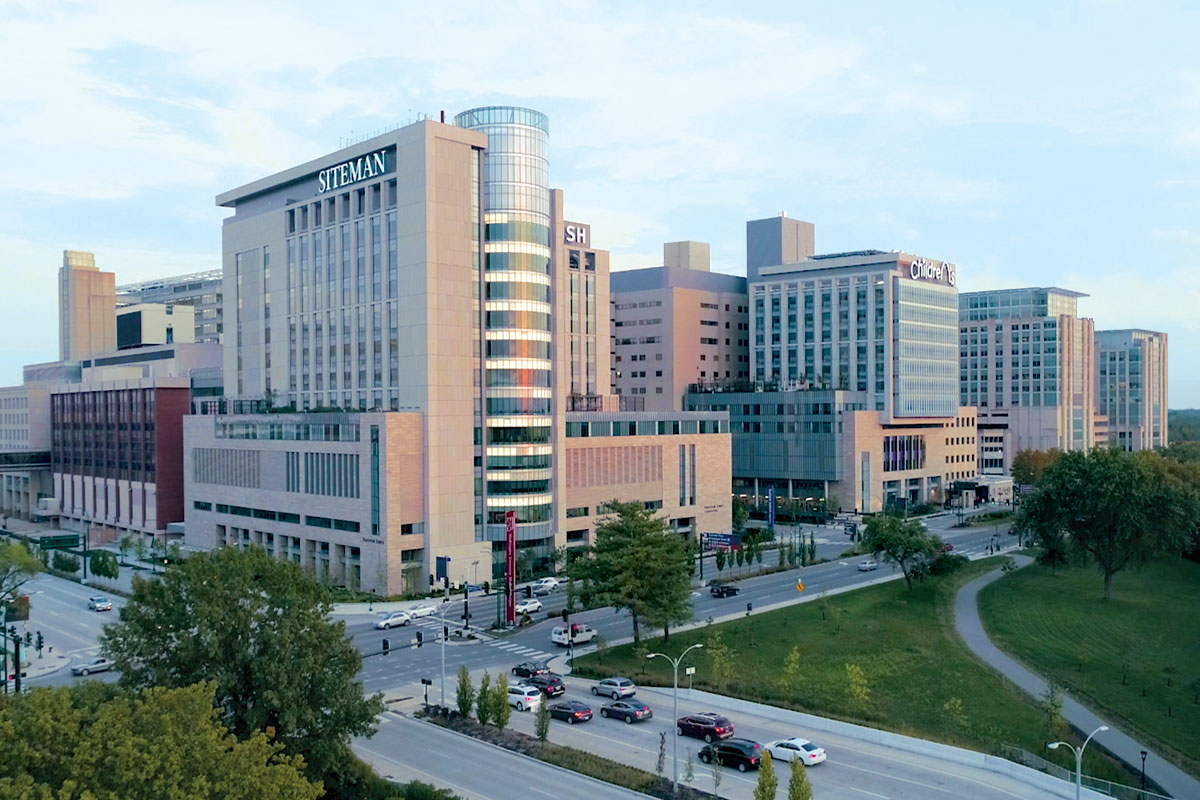
Regional pandemic stay-at-home orders in 2020 temporarily halted all biomedical research unrelated to COVID-19 at the School of Medicine. But as COVID-19 restrictions were lifted, the school bounced back, and researchers returned to their benches. Despite pandemic challenges, 2021 proved to be yet another year of remarkable accomplishments as the school exhibited dramatic growth.
The National Institutes of Health (NIH) awarded School of Medicine researchers $575.8 million in funding in 2021, an increase of nearly $88 million over the previous year. This is an all-time high for the school and the sixth consecutive year of growth in NIH grant awards. Research grants to the School of Medicine from all sources reached close to $750 million in 2021. Together with increased institutional support, the total annual investment in research has reached more than $1 billion.
David H. Perlmutter, MD, executive vice chancellor for medical affairs, George and Carol Bauer Endowed Dean of the School of Medicine and Spencer T. and Ann W. Olin Distinguished Professor, talks about the exciting research that has fueled this growth and expansion.
Outlook: Since 2016, NIH funding has grown by more than $200 million, an increase of 54% that corresponds to a compound annual growth rate of over 9%. What do these numbers tell you about the School of Medicine?
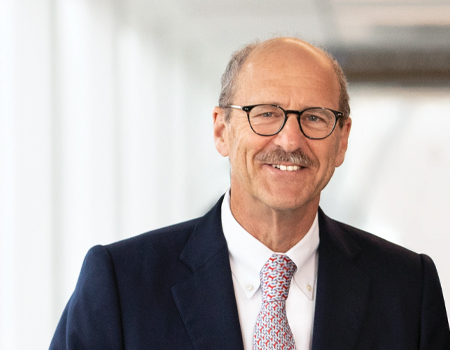
Perlmutter: The increase in grant awards from the NIH, as well as other funding sources, is a reflection of the remarkable depth and breadth of talent here at the School of Medicine. Even with
the challenges and disruptions of the COVID-19 pandemic, the commitment of WashU Medicine faculty and staff to our missions has been breathtaking. We care for patients with deep compassion and the highest standards of quality possible today, while also carrying out research that will allow us to enhance that care and the outcomes for tomorrow and well into the future.
Our goal has never been getting grants just for the sake of getting grants or because it’s prestigious. Our holy grail has always been curing disease and improving human health. We do this in large part through our discovery capabilities — through knowledge that advances in the lab and leads to new therapies and innovations for improving patient care. And grants allow us to do more of this work and to do it at the level of excellence that everyone has come to expect from WashU. That is why this news is so incredibly exciting and gratifying.
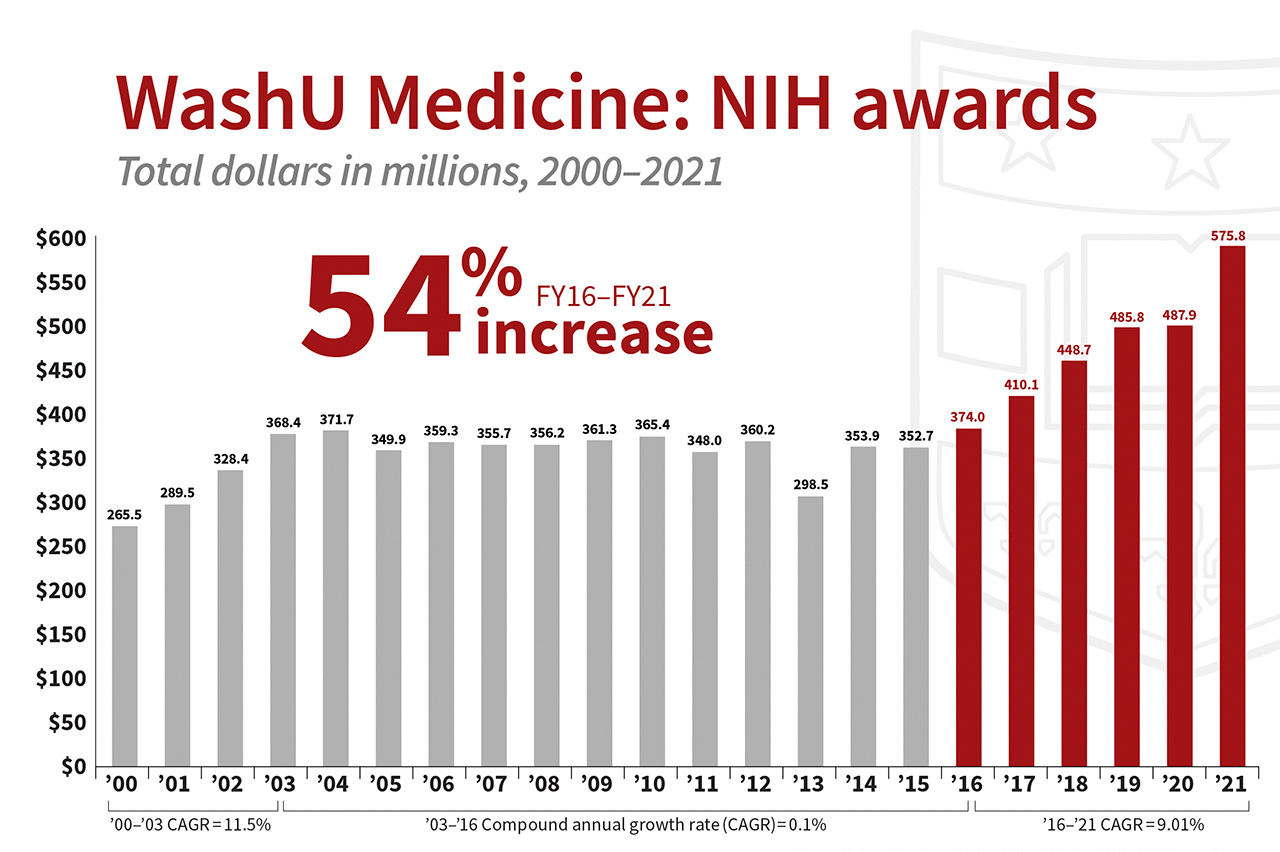
I track our NIH funding very closely, and I knew we had great momentum over these past few years, but it still was completely astonishing to see the total number of $575.8 million for federal fiscal year 2021, particularly when I realized that we had surpassed other top-notch academic medical centers with whom we collaborate and whom we deeply respect like the University of Pennsylvania, Stanford University and Johns Hopkins University. As an institution, we cannot be humble about this — it is a spectacular achievement.
The growth in our research base has included new recruits, the evolution of our junior faculty to independent funding, and new grants from long-standing members of our faculty. Some of the newer grants — like the Center for Perioperative Mental Health, the Conte Center for Basic Neuroscience Research, which will work on new drugs for psychiatric disease, and the Long Life Family Study — and new projects using the Dominantly Inherited Alzheimer Network Trials Unit (DIAN-TU) represent existing strengths across several departments and are responsive to key areas for the future of biomedicine. We also have seen wonderful and complementary growth in our clinical and educational programs over the last five years. There’s been so much growth that we now are scrounging around for space and counting the days until major construction projects are done, including the Neuroscience Research Building, the vertical, six-floor expansion of the BJC Institute of Health and the Ambulatory Cancer Building.
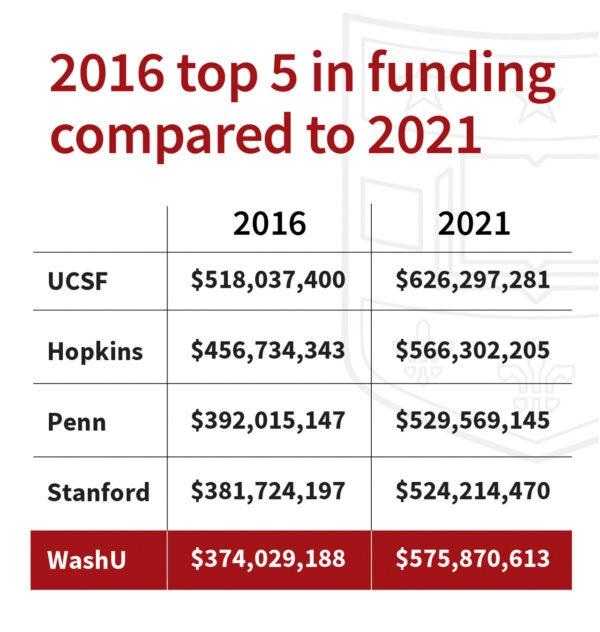
Outlook: How has the School of Medicine achieved such strong growth in NIH support?
Perlmutter: The School of Medicine has been investing in research for decades — long before I became dean — and that investment has paid off in the form of a strong track record of groundbreaking publications and successful NIH funding. We continue to build on that foundation, thanks to the leadership of the Executive Faculty and the power of its shared governance model. Each of our department heads has figured out ways to invest more in the research and clinical programs of their departments, to bring in new recruits and to explore new research areas. We also have benefited from the BJC Investigators Program, which has added six brilliant leaders in science to our faculty and will bring in four more BJC Investigators in the coming years.
This kind of long-term and stable investment has led to an exceptional standard for the quality of science that is baked into the culture of this community. Every project and every initiative is conceptualized to address an extremely important goal using the best possible scientific approach no matter how daunting the challenges. You can observe it in work from our most distinguished faculty to the students even as they start their first research projects.
Outlook: Why is the amount of NIH funding particularly significant?
Perlmutter: NIH funding is an objective measure of scientific competitiveness and undergoes extremely rigorous peer review. We and many of our peer institutions consider this funding the most useful in setting strategic goals and measuring our success because it is publicly available and can be validated. Other ranking metrics, such as those of U.S. News & World Report, include data that is not verifiable and, because of that, often generate relatively inexplicable rankings. But more than being the gold standard, NIH funding also provides partial funding for facilities and infrastructure that supports the research, and that obviously helps us a great deal as we try to get more and more lifesaving therapeutics and techniques out into the world.
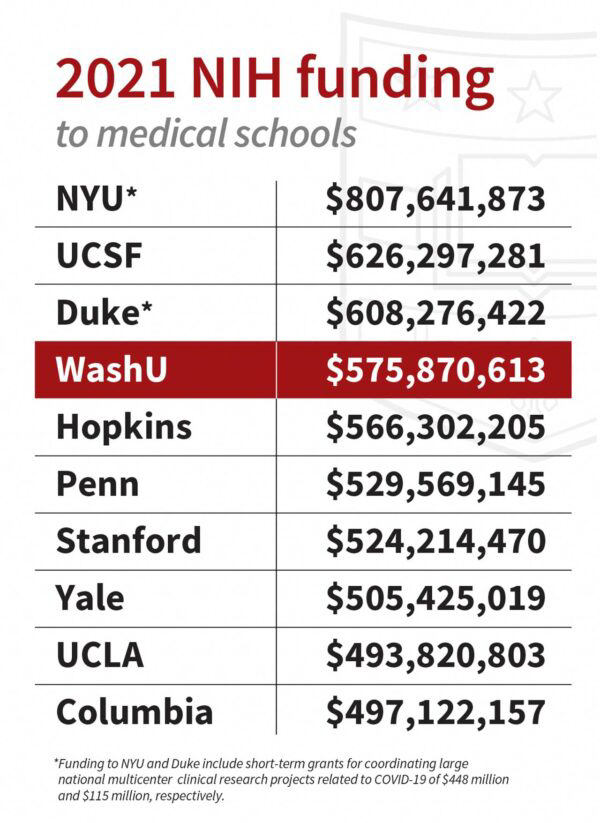
Outlook: Can you comment on the research expansion as it relates to what you have articulated about the “virtuous cycle” of academic medicine?
Perlmutter: We invest in education and research to improve clinical care and create better outcomes for patients and better health for the community. In turn, our clinicians identify important areas for study. This culture of academic improvement also draws more patient referrals and clinical research studies that elevate us as a clinical provider. This is what distinguishes an academic medical center from other hospitals and clinics, and we strongly believe that it is the best way to advance human health for everyone. Yes, we’re doing the best we can to take care of patients today, but we aspire to do even more — we are compelled to do even more for the people of our city and the region.
Outlook: In the School of Medicine’s 2021 State of the School Report, you noted other growth metrics. Can you elaborate?
Perlmutter: Every way you look at it, the school is thriving. Successes over the past five years include: curriculum modernization and major increases in scholarships; increased support to expand the number of graduate students in the Division of Biology & Biomedical Sciences; an increase in the number and diversity of medical school faculty; an increase in clinical activity, in terms of patient visits and in the number of staff available to support that care; and substantial new investments in research, ambulatory clinic space and research and clinical programmatic initiatives. In total, the number of medical school faculty has increased by 29% since 2016. Patient visits have increased by 51% during that same time period, and that is a reflection of our success in providing better access to care for our community.
Outlook: Where do you see the School of Medicine going in the next few years?
Perlmutter: We are having a positive impact in so many ways here at WashU. We are home to great talent and are succeeding in attracting new recruits as well. It is inspiring to see how our strategic plans have led to growth in all of our missions: research, education and clinical care. Looking to the future, we can’t help but think big. Our primary goals are: How can we change the way we fight disease and meet medicine’s most enduring challenges, including prevention and lowering cost of health care? How can we make sure that everyone in our region, urban and rural, benefits from the work we’re doing here? What can we do to improve the economy in our city and the region since we know that economic status plays such an important role in health outcomes? Yes, these are big challenges, but we can tackle them at WashU Medicine. I cannot imagine anything I would rather do with my life right now. Nor can I think of a community, a team, with whom I would rather do it.
Published in the Winter 2021-22 issue


